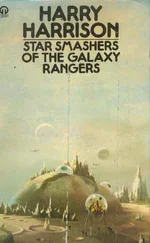1 v
2 iii
3 iv
4 xi
5 xii
6 xiii
7 1
8 2
9 3
10 4
11 5
12 6
13 7
14 8
15 9
16 10
17 11
18 12
19 13
20 14
21 15
22 16
23 17
24 18
25 19
26 20
27 21
28 22
29 23
30 24
31 25
32 26
33 27
34 28
35 29
36 30
37 31
38 32
39 33
40 34
41 35
42 36
43 37
44 38
45 39
46 40
47 41
48 42
49 43
50 44
51 45
52 46
53 47
54 48
55 49
56 50
57 51
58 52
59 53
60 54
61 55
62 56
63 57
64 58
65 59
66 60
67 61
68 62
69 63
70 64
71 65
72 66
73 67
74 68
75 69
76 70
77 71
78 72
79 73
80 74
81 75
82 76
83 77
84 78
85 79
86 80
87 81
88 82
89 83
90 84
91 85
92 86
93 87
94 88
95 89
96 90
97 91
98 92
99 93
100 94
101 95
102 96
103 97
104 98
105 99
106 100
107 101
108 102
109 103
110 104
111 105
112 106
113 107
114 108
115 109
116 110
117 111
118 112
119 113
120 114
121 115
122 116
123 117
124 118
125 119
126 120
127 121
128 122
129 123
130 124
131 125
132 126
133 127
134 128
135 129
136 130
137 131
138 132
139 133
140 134
141 135
142 137
143 138
144 139
145 140
146 141
147 142
148 143
149 144
150 145
151 146
152 147
153 148
154 149
155 150
156 151
157 152
158 153
159 154
160 155
161 156
162 157
163 158
164 159
165 160
166 161
167 162
168 163
169 164
170 165
171 166
172 167
173 168
174 169
175 170
176 171
177 172
178 173
179 174
180 175
181 176
182 177
183 178
184 179
185 181
186 182
187 183
188 184
189 185
190 186
191 187
192 188
193 189
194 190
195 191
196 192
197 193
198 194
199 195
200 196
201 197
202 198
203 199
204 200
205 201
206 202
207 203
208 204
209 205
210 206
211 207
212 209
213 210
214 211
215 212
216 213
217 214
218 215
219 216
220 217
221 218
222 219
223 220
224 221
225 222
226 223
227 224
228 225
229 226
230 227
231 228
232 229
233 230
234 231
235 232
236 233
237 234
238 235
239 236
240 237
241 238
242 239
243 240
244 241
245 242
246 243
247 244
248 245
249 246
250 247
251 248
252 249
253 250
254 251
255 252
256 253
257 254
258 255
259 257
260 259
261 260
262 261
263 262
264 263
265 264
SCIENCES
Universe , Field Director – Fabienne Casoli
Galaxies , Subject Head – Françoise Combes
Galaxies
Formation and Evolution
Coordinated by
Françoise Combes

First published 2020 in Great Britain and the United States by ISTE Ltd and John Wiley & Sons, Inc.
Apart from any fair dealing for the purposes of research or private study, or criticism or review, as permitted under the Copyright, Designs and Patents Act 1988, this publication may only be reproduced, stored or transmitted, in any form or by any means, with the prior permission in writing of the publishers, or in the case of reprographic reproduction in accordance with the terms and licenses issued by the CLA. Enquiries concerning reproduction outside these terms should be sent to the publishers at the undermentioned address:
ISTE Ltd
27-37 St George’s Road
London SW19 4EU
UK
www.iste.co.uk
John Wiley & Sons, Inc.
111 River Street
Hoboken, NJ 07030
USA
www.wiley.com
© ISTE Ltd 2020
The rights of Françoise Combes to be identified as the author of this work have been asserted by her in accordance with the Copyright, Designs and Patents Act 1988.
Library of Congress Control Number: 2020942773
British Library Cataloguing-in-Publication Data
A CIP record for this book is available from the British Library
ISBN 978-1-78945-012-5
ERC code:
PE9 Universe Sciences
PE9_8 Formation and evolution of galaxies
PE9_9 Clusters of galaxies and large scale structures
The galaxies were not identified as worlds apart, as the philosopher Immanuel Kant foresaw, until the 1920s, just over a century ago. Before then, astronomers had observed nebulae, but had not distinguished between a cloud of emitting gas, such as the Orion Nebula, and outer galaxies, such as the Andromeda Nebula. At the beginning of the 20th Century, a great debate took place to know the size of our world (the Milky Way), and the distance of the various stars in the sky. In 1924, Edwin Hubble observed the variable stars in Andromeda of the Cepheids, which Henrietta Leavitt in 1909 had shown to be a good indicator of distance. Thus, it was shown that Andromeda was a galaxy “outside” ours, located about 2 million light-years away.
Progress since then has been meteoric. We now know millions of galaxies, and determine their distance because of the expansion of the Universe and the corresponding redshift. Due to the finite speed of light, we can go back in time, observing distant galaxies in their youth. We thus observe galaxies as far as the edge of our Universe, at the limit of our horizon, which allows us to reconstruct their history.
In this book, we will first describe the various morphologies and categories of galaxies, which are essential for a better understanding of their formation and evolution. There are several classifications, depending on whether we consider the various stellar components: bulge, disc, spheroid, photometry and more or less blue colors according to the rate of star formation, or the kinematics of stars, that is to say a kinetic energy either dominated by rotation, or by the velocity of dispersion, or the fraction of gas. Disc galaxies generally contain spiral or barred structures, which are the engine of evolution. These structures give rise to resonances which will be the source of rings, or pseudo-rings, very useful to know the speed of spirals and bars.
Our Galaxy, the Milky Way, the best known and most familiar, has a barred spiral structure, yet it took a long time to be identified, because we are in its plane: it appears edge-on, obscured by dust lanes. Its structure appears more clearly in the near infrared. It consists of a thin disc, where the gas and young stars are located, and a thick disc, which dates back billions of years. It has a pseudobulge, mainly due to the bar, and its vertical resonance. There is also a more or less spherical, diffuse halo of stars, whose formation would be essentially due to the accretion of small satellite galaxies. These are destroyed by tidal interaction, and deploy in a multitude of stellar streams. We can go back to the history of the formation of the different components, by galactic archaeology, by determining the age and metallicity of stars. The GAIA astrometric satellite has recently made enormous progress in specifying the distances and proper motions of a large number of webs.
Читать дальше













